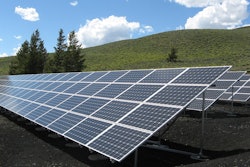
It’s time to act. That’s the message that’s been all over the news in recent weeks as new reports continue to stress the urgency of the climate crisis and the need to reduce emissions. Aggressive emissions standards aren’t going anywhere as almost all industries, including ground transportation, work to find a solution while trying to maintain their bottom line. Cost-effective solutions are already available to help lower emissions, and as fleet managers asses how to best meet their sustainability goals, they should pay close attention to the energy sources they choose.
Many fleet managers consider tailpipe emissions first and foremost, but it’s important to also evaluate the overall emissions that go into creating the energy source that powers a vehicle. Looking at the lack of tailpipe emissions from “zero-emissions” vehicles doesn’t tell the whole story, which means selecting electric vehicles (EVs) may be shortsighted.
A recent study is debunking the misconception that EVs offer the lowest emissions for medium-duty (class 3-7) fleet vehicles. In most states, propane autogas vehicles offer a lower lifetime carbon footprint than their electric counterparts. As the study makes clear, there is really no such thing as a truly “zero-emissions” vehicle when upstream and downstream emissions are rightfully counted.
More than tailpipe emissions
In a comparative analysis conducted by the Propane Education & Research Council (PERC), researchers found propane-powered medium-duty vehicles provide a lower carbon footprint solution in 38 states and Washington, D.C. when compared to medium-duty EVs charged using the electric grid in those states. This is due to the amount of carbon produced from each state’s unique energy mix for electricity generation using coal, petroleum or other energy sources.
In addition, while EVs may have zero tailpipe emissions, emissions are generated prior to the vehicle hitting the road through both the electric grid and the powertrain production (chiefly battery manufacturing). When comparing the difference in life-cycle equivalent carbon dioxide (CO2eq) emissions of a single medium-duty vehicle, propane autogas on a national average emits 125 tons of CO2eq less than an electric medium-duty vehicle.
Click here to hear more about renewable energy in the supply chain:
Looking to the future
Propane autogas is a clean, non-toxic energy source that reduces strain on the fragile electric grid. As technology improves, it’s true that the electric grid will continue to get cleaner, however propane autogas is likewise getting cleaner year after year with improved engine technology and renewable propane.
Renewable propane is a byproduct of the renewable diesel and sustainable aviation fuel production process, which converts plant and vegetable oils, waste greases and animal fat into fuel. It has the same chemical structure and physical properties as conventional propane and can be used in any existing propane autogas engine. Because it’s produced from renewable raw materials, renewable propane has an even lower carbon intensity than conventional propane and is far cleaner than other energy sources.
As such, the PERC study found when renewable propane is considered, propane-powered medium-duty vehicles currently provide a lower carbon footprint solution in every U.S. state except Vermont, which generates most of its electricity from hydroelectric powerplants. Furthermore, the abundance of propane and growth of renewable propane mean it can be used for generations to come. Within the next few years, 100 million gallons of renewable propane will likely be available. By 2030, that figure could surpass 300 million.
Affordable emissions reductions
When investing in new vehicles, fleet managers know the best choice is not only one that reduces emissions over the long-term, but is also cost-effective. Choosing propane autogas vehicles is not only good for lowering emissions, but also a fleet’s operating costs. Propane autogas has the lowest lifetime cost of any fuel.
The incremental capital cost for a medium-duty propane autogas vehicle, relative to its gasoline or diesel counterpart, is on average 15%. Comparatively, a similar medium-duty EV is over 250%. Because it’s affordable, fleets can put more low-emissions propane vehicles on the road, further accelerating decarbonization. Not to mention, the cost to purchase and install refueling equipment for a fleet of medium-duty propane autogas vehicles is significantly lower than the cost to purchase fast charger equipment for a comparable electric vehicle fleet in a comparable time frame.
Propane autogas is affordable and abundant, plus it reduces carbon emissions immediately while helping fleets meet their energy needs over the long term. Fleet owners are encouraged to look into propane autogas as an energy solution for decarbonization that they can start implementing today.


















